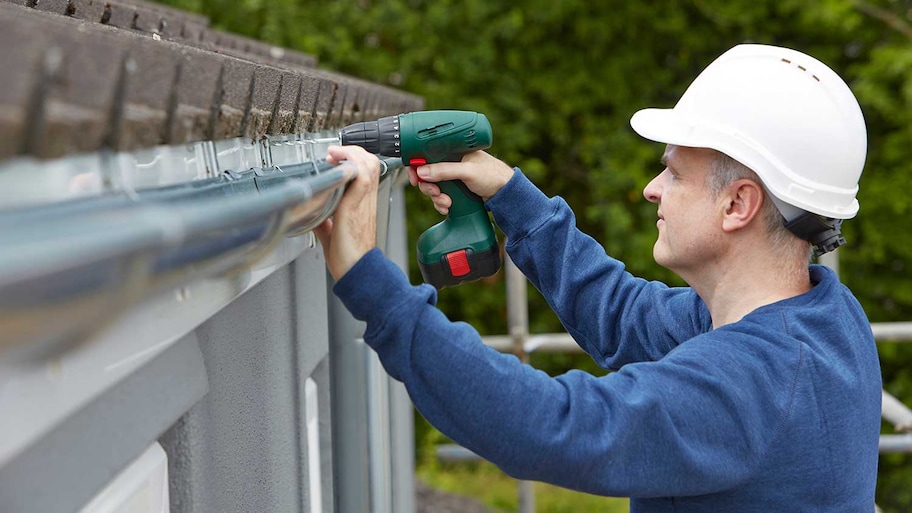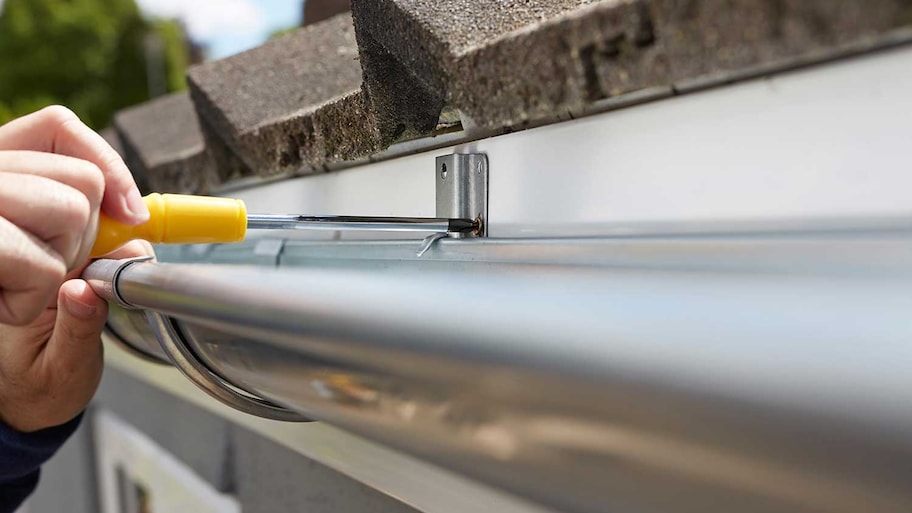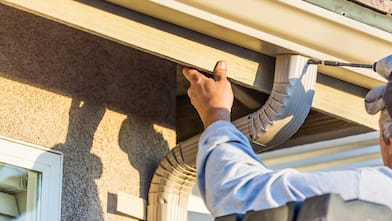Highlights
The gutter should be installed as close to the shingles as possible.
The back of the gutter should rest behind the drip edge; the drip edge goes over the gutter
The back of the gutter should rest on a drip edge.
Failing to install gutters properly can lead to costly problems.
You may not think about your gutters often, but they’re working hard nearly every day to keep your home safe and dry. So, when installing new gutters, it’s crucial to place them in the right position to ensure rainwater doesn’t overflow, causing huge problems.
Below we’ve outlined a few ways you can check to see if your gutters are sitting pretty or may need some adjusting. As always, we recommend checking the codes for your zone on local climate and how installation procedures may vary.
How Far Should Gutters Be From the Roof Edge?
The gutter should be installed as close to the shingles as possible; no more than 2 or 3 inches. If the gutter distance is more than 3 inches, the rain will run off the roof and won't drain properly. The gap between the gutter and the roof can vary in size because the gutters must slope towards the downspout to ensure the correct water runoff.
Incorrect gutter placement can cause soil shifting around your house, insect infestations, and damage to the siding or foundation, and these issues are often expensive to fix. If gutters are too far from the roof, rain may flow over walls and rot the facia. The water will find its way inside the house, rotting the timbers and carpets or seep into the foundation, causing a structural failure.
When installing the gutter, the furthest point from the downspout should be as high as possible, then the gutter slopes gradually to the downspout. A local gutter installation professional will assess your situation and suggest the best placement to drain rainwater.
How Far Should Gutters Stick Out From the Siding?

Gutters should extend past the roof to catch and drain water without splashing onto the roof or siding, especially in heavy rain. Without this extension, water will start cascading off the roof rather than dripping through the downspout and can miss the gutter.
A standard gutter will have about half to three-quarters of its width sticking out beyond the shingles to catch any runoff and ensure that water does not get trapped in the shingles and instead runs down the roof.
How Far Should Gutters Be From Fascia Boards?
Gutters that are too high can enable water runoff to drip down their backside, which can cause deteriorating fascia boards and staining the siding. The back of the gutter should rest behind the drip edge to prevent water intrusion behind the gutter.
The drip edge is an element that hangs over the roof and has a lower edge. The water flows into the drip edge and eventually travels into the gutter. The drip edge works with the gutter to control the direction of the water and helps protect the building against any damage.
"Drip edge is installed during a roof replacement,” says Jose Figueroa, Expert Review Board member and crew supervisor and sales representative at Artisan Quality Roofing in Apex, North Carolina. “While not required by shingle manufacturers, it is one of the best things you can do to protect your sheathing, fascia, and siding from wood rot."
The drip edge is sometimes installed with a furring strip, which protects the drip edge and the fascia board.
If a drip edge isn’t there, the edge of the shingles should extend over the backside of the gutter by about an inch, so the water won't drip behind it and rot the fascia board.
U-type brackets are used for half-round gutters. Bracket screws, ideally speed screw hangers, screw right up to the fascia for K-style gutters
Is My Gutter Properly Installed?

The tell-tale sign that your gutter is properly installed is if it drains properly during downpours. An incorrectly installed gutter—or one that you haven’t maintained regularly—won't collect runoff from the roof as expected and could lead to many unwanted issues such as standing water or overflow during heavy rainfall.
A spot check of your gutters can give you an idea if you need to replace them. Look for the following signs from the ground:
The gutters are loosely attached.
Gutters don't have a tilt to ensure they drain towards the downspouts.
Drip or water stains on the outside of the gutters, which is a sign of water overflow.
Of course, if you have any doubt or just want a professional opinion, it’s best to ask a local gutter installation company to take a look. Hiring a vetted pro to start with can help eliminate any doubt that your gutters will be installed correctly.





